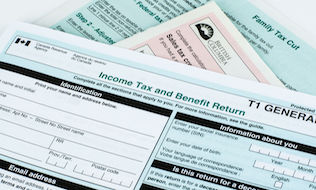
The federal budget has proposed the end of health and welfare trusts, suggesting either a conversion to employee life and health trusts or a windup by the end of 2020.
While the government added rules in regards to employee life and health trusts to the Income Tax Act in 2010, the Canada Revenue Agency has been providing administrative positions about what qualifies as a health and welfare trust, as well as provisions relating to contributions and taxable income, since 1966.
“When employee life and health trusts were introduced in 2010, the government at that time had published that they intended that people would convert over to an ELHT, but they never did anything to make that happen. So now, I guess, they’re catching up for lost time,” says Ellen Whelan, a principal in the group benefits practice at Eckler Ltd.
“Health and welfare trusts evolved over the past because people wanted a mechanism to fund their employee benefits and there was nothing they could draw on specifically in the Income Tax Act, so they developed interpretation bulletins,” says Whelan. “And through the reading of the interpretation bulletins, people deduced that they could set up this structure.”
Read: Gender inequality in the workplace, retirement addressed in budget
The move to formalize the rules more fully came in the wake of new trusts set up as part of the restructuring proceedings involving General Motors of Canada Co. and Chrysler in 2009, she adds. As a result, the new rules included specifications around matters such as who can be a beneficiary, residency requirements and how tax deductions work, she notes.
Following a consultation process, the government will add rules about the transition from health and welfare trusts and guidance on windups to the Income Tax Act, according to the budget. Starting in 2021, only employee life and health trusts will be permissible, with remaining health and welfare arrangements subject to the normal tax rules for trusts. The budget noted the change would provide more certainty for taxpayers and greater consistency in taxing the trusts.
Many health and welfare trusts will need to look at how the conversion will take place, says Whelan. Key considerations include looking at the beneficiaries and whether the trust is mostly for key employees like executives, she notes.
“If those things are easy to convert over, then it gets into how much is it going to cost to convert this from A to B,” she says. “Maybe it’s nothing; maybe you just change the trust number and on you go, but probably there’s going to be some changes that are there.”
Read: Budget commits to consultations on pension security issues in wake of Sears
Plan sponsors will also have to consider the legal implications to ensure they’re compliant. “And then they’ll need to probably chat with their actuaries about what does this mean for liabilities, what does it mean for surpluses, what does it mean for tax deductibility of our contributions and income and all that kind of stuff,” says Whelan.
In light of the changes, the Canada Revenue Agency won’t apply its administrative positions with respect to health and welfare trusts to those established after the day of the budget’s release.
The consultation on the transition will be open until June 29, after which the government will release draft legislative proposals and guidance. According to the budget, the issues for consideration in the consultation include whether a health and welfare trust can continue as an employee life and health trust without creating a new arrangement, whether and under what conditions a rollover of assets to a new trust will be permissible and the tax implications for a health and welfare trust that doesn’t satisfy the conditions to become an employee life and health trust or where the trustees choose not to convert.
Read: Budget offers details on new five-week leave for second parent
